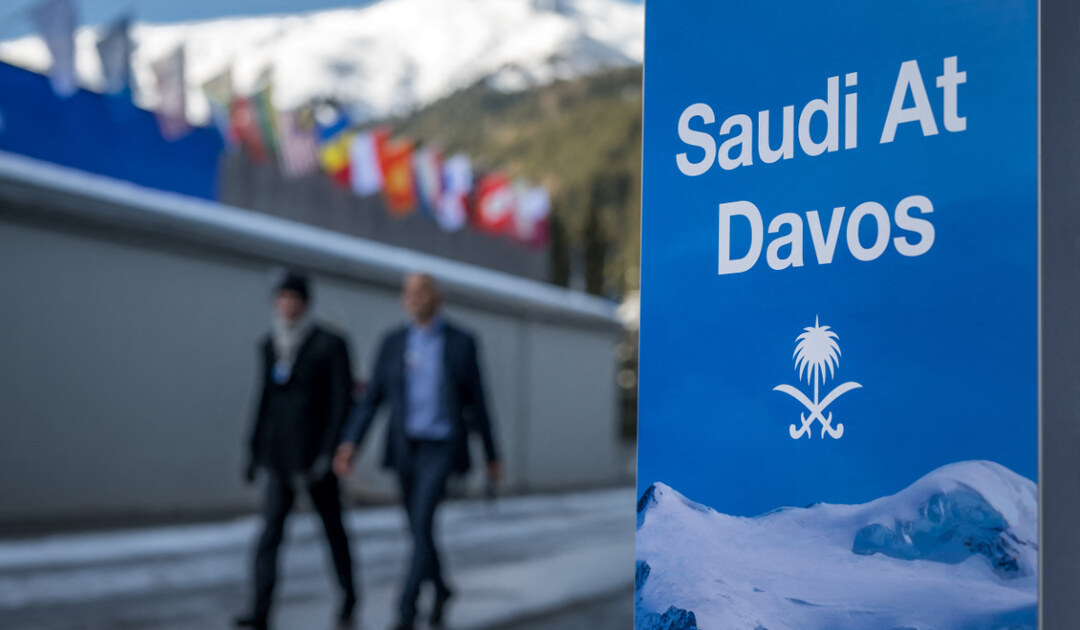The World Economic Forum in Davos has long been the go-to gathering for global leaders to tackle the world’s most pressing economic and geopolitical challenges. But lately, something curious has unfolded amid the high-level debates: Art and culture have moved from the margins to the main stage, wielded as tools to confront our shared global challenges. And why not? In a world of growing complexity, cultural innovation offers a unique capacity to complement data and policy, and to move people.
During Davos 2025, the work of artist Refik Anadol took center stage with immersive, artificial intelligence-generated visual experiences to bring glacial destruction to life in ways that no pie chart ever could. This was Anadol’s third appearance at Davos, and his message was loud and clear: Climate change is not an abstraction; it is a visceral, visual reality. This was a reminder that creative expression can transcend boundaries and inspire collaboration in ways beyond traditional diplomacy. The integration of art and culture into Davos is not just a sideshow; it is a deliberate strategy.
Alongside Anadol’s installation, a cultural table showcased global figures from art and sports, further embedding creativity into high-level discussions. This isn’t a one-off event, either. Joseph Fowler, the WEF’s head of art and culture, has been steering this initiative year-round, ensuring that art is not just an annual Davos cameo but a consistent voice in the Forum’s mission to drive global progress.
The forum’s overarching theme this year, “Collaboration for the Intelligent Age,” stresses the need for global progress through innovation and sustainability. And that is what is unique about Davos. It is more than a conference; it is a mirror of our world, reflecting both the promise and the peril of an interconnected age. Nowhere was this duality more apparent than at the Saudi House pavilion in Davos. Here, amid sleek displays and carefully curated dialogue sessions, Saudi Arabia shared its grand vision for the future of the world. The pavilion was a hive of activity, hosting discussions on everything from smart tech and virtual healthcare to sustainable tourism. With heavyweights like the Royal Commission for AlUla and Diriyah Gate Development Authority at the table, the Kingdom’s commitment to resilience and global connection was on full display. This was a demonstration of how art and culture are pivotal in bridging divides and fueling innovation.
This is the essence of platforms like Davos. It is where politics, business, and culture come together in unexpected ways, creating sparks that sometimes light the way forward. In a world increasingly mediated by screens and algorithms, such gatherings remind us of the power of human connection. Art and culture, once relegated to the sidelines of global summits, are now stepping into the spotlight to enrich the conversation and reshape it. As the forces shaping our future — AI, climate change, global connectivity — grow more complex, we need every tool at our disposal to navigate them. Art and culture are not privileges. They are necessities, as vital to the human ecosystem as the data centers and satellites that define our digital age.
Here’s the bottom line: This is not just about high-minded ideals or aesthetic flair. It is a strategy. Davos, with its blend of visual displays and verbal dialogue, is proving that when we think creatively — when we collaborate for an intelligent age — we just might find intersectional and interdisciplinary solutions that truly make a difference. The WEF’s commitment to this approach sets a precedent for other global platforms. As we navigate the challenges of the 21st century, the ability to communicate across boundaries, both visual and verbal, will be more important than ever.
• Dr. Ghadah W. Alharthi is an international cultural adviser and an associate professor specializing in culture and innovation at Central Saint Martins, University of the Arts London. X: @ GhadahWA













